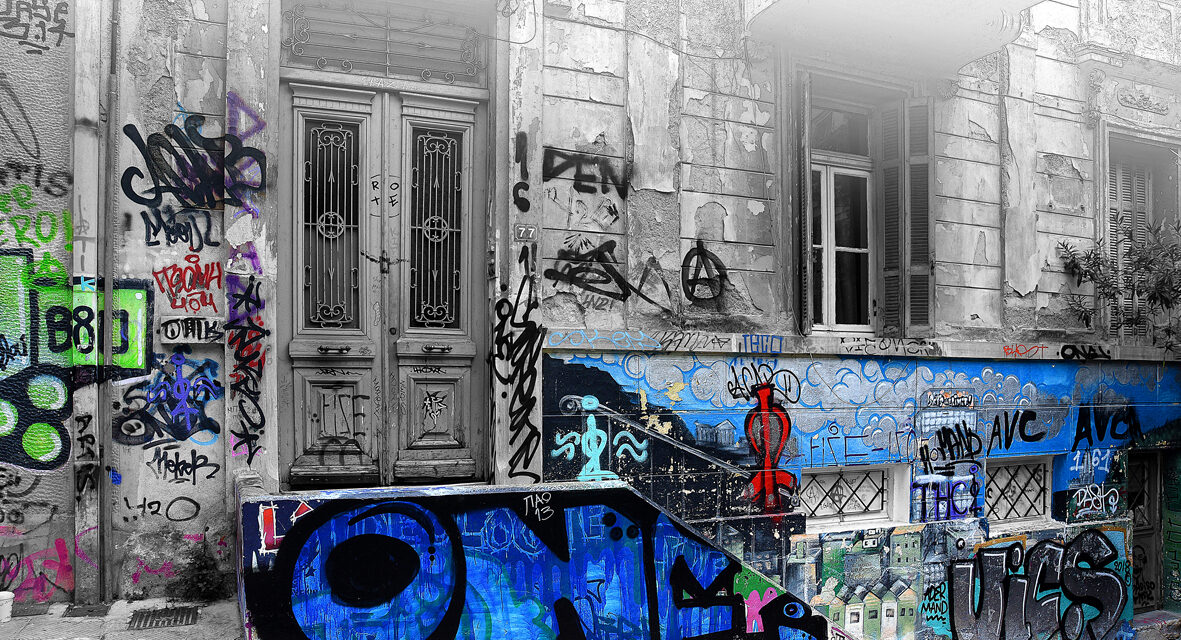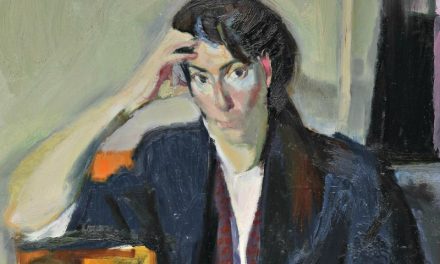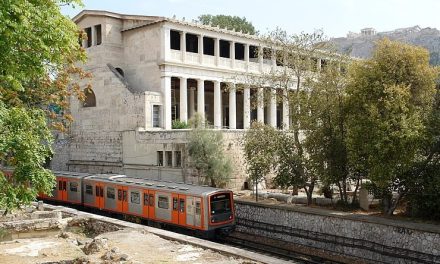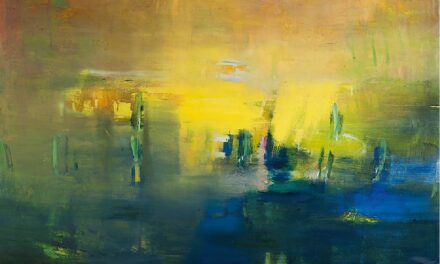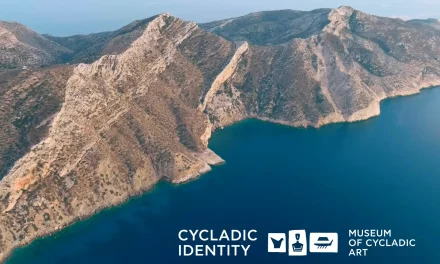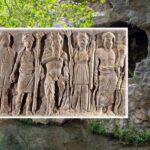Exarcheia is one of the most alternative and fascinating neighborhoods in Athens. Closely associated with students, intellectuals, counterculture and political activism, its story goes back to the 19th century. Its neoclassical townhouses, elegant balconies and charming pedestrian streets are architectural urban traits of bygone eras.
Despite its controversial reputation, it is a vibrant neighborhood. Flanked by trendy cafes, no-frills restaurants, wine bars, art house theatres and galleries, Exarcheia offers a relaxed vibe, inviting locals and tourists alike to linger at sidewalk tables to grab a bite and engage in never-ending conversations.
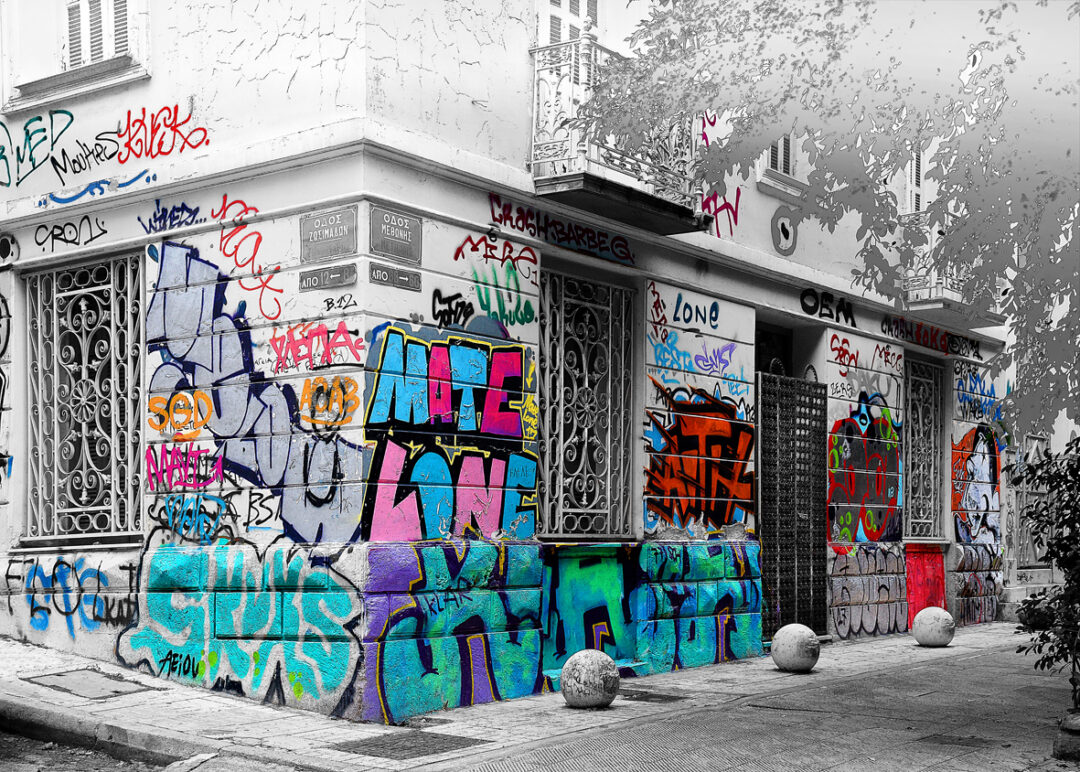
In his latest exhibition XARCHEIA at Eikastikos Kyklos, Nikos Leontopoulos, through his photographic lens and creative instinct reveals the identity of this diverse neighborhood. Focusing on the architectural aspect of this rather misunderstood part of Athens city center, he captures its long history and uncertain future.
Nikos Leontopoulos was born in Athens. He has been working in art photography for more than 45 years. He studied Graphic Design and Computer Graphics and has worked in major advertising companies and graphic design studios. His work has received many awards in Greece and abroad. He worked as a lecturer for Institutes of Vocational Training and advertising companies. Since 2003 he is running his own publishing company. He has presented two solo exhibitions and has participated in more than 50 group exhibitions. Since 2021 he has been the Artistic Director of the Hellenic Photographic Society.
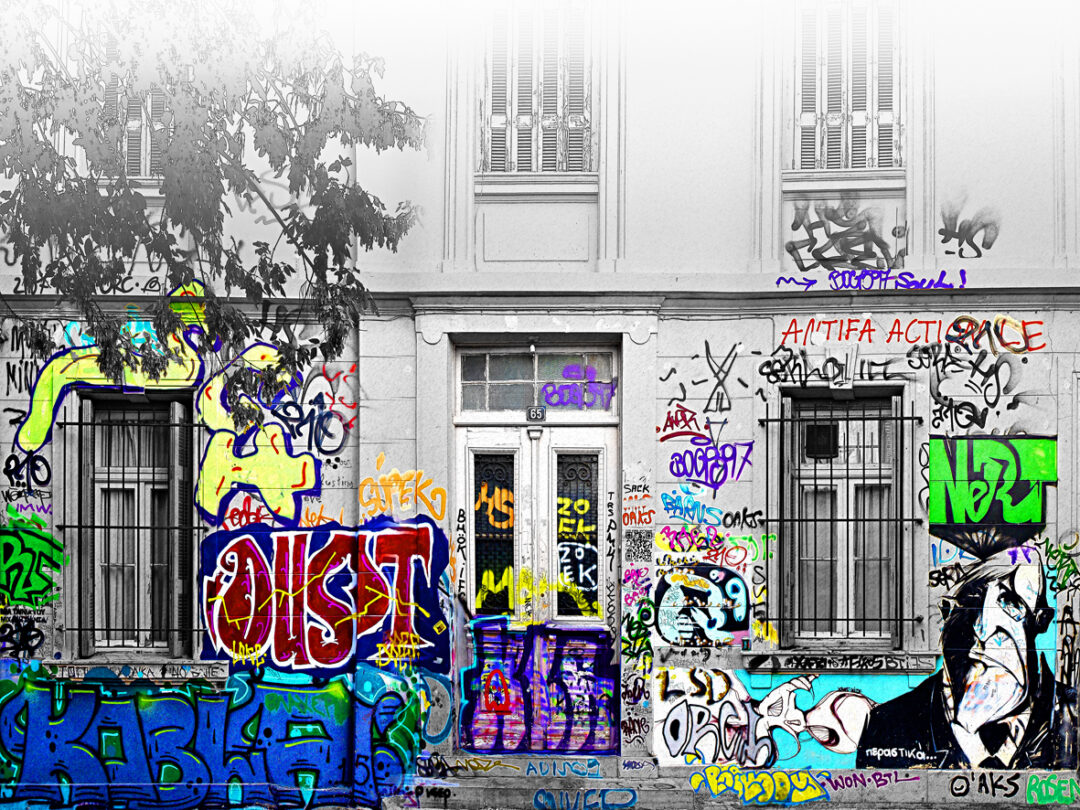
Nikos Leontopoulos talks to Greek News Agenda* about Exarcheia and his artistic approach.
What prompted your interest in the Exarcheia neighborhood?
Exarcheia is one of my favorite neighborhoods. It inspires me, just like all the distressed urban neighborhoods in Athens, Metaxourgeio, Kolonos, Psirri, Monastiraki etc. I go there very often for a walk or coffee.
The title of the exhibition, XARCHEIA includes the word archive. How did this approach come about? What about the past and future of this historic neighborhood?
I used the English letter X and the word ARCHIVE in capital letters, to refer to the word archives. I believe that my photos are an archive of the historical record of the area. In a few years from now many of these buildings featured will no longer exist as they will have probably been replaced by high-rise Airbnb residences.
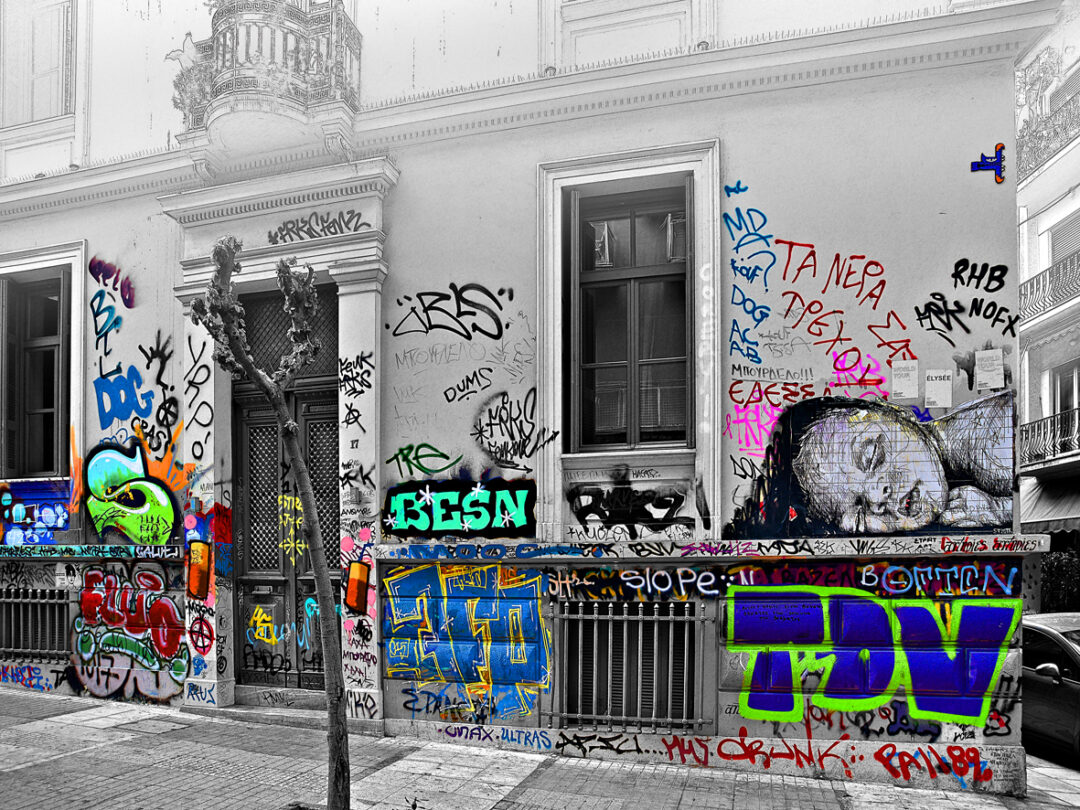
What aspects of the area do you want to highlight? How were the photos artistically processed and what is the role of graffiti in your work?
Exarcheia is one of the oldest urban neighborhoods of Athens. The old houses are now falling apart. They have become the canvas of the street artists. In my work, I do not judge whether it is good or bad to graffiti on them. What struck me is this explosion of color that is omnipresent on the walls of the entire neighborhood. That’s why I’ve kept the buildings black and white. This way, the graffiti color palette is more intense.
How would you evaluate the area from an architectural point of view?
All of these crumbling neoclassical buildings, from the smallest townhouse to the interwar apartment buildings, are architectural gems. The cast iron balconies, the canopies, and the service staircases are works of art in themselves. This is what I tried to capture in my photographs. The black and white refers to the past and the color to the present.
How has Exarcheia been portrayed in our collective consciousness?
In our collective memory, Exarcheia is the area of drug use and trafficking. Of course, this has nothing to do with reality. However, for years now, this perception has closely been associated with the degradation of the area. For obvious reasons. As far as I am concerned, Exarcheia is a quaint and safe neighborhood and I hope it remains this way.
*Interview by Dora Trogadi

